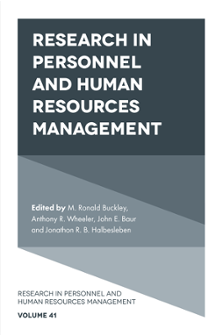
Index
Research in Personnel and Human Resources Management
ISBN: 978-1-83753-389-3, eISBN: 978-1-83753-388-6
ISSN: 0742-7301
Publication date: 7 September 2023
Citation
(2023), "Index", Buckley, M.R., Wheeler, A.R., Baur, J.E. and Halbesleben, J.R.B. (Ed.) Research in Personnel and Human Resources Management (Research in Personnel and Human Resources Management, Vol. 41), Emerald Publishing Limited, Leeds, pp. 245-254. https://doi.org/10.1108/S0742-730120230000041002
Publisher
:Emerald Publishing Limited
Copyright © 2023 M. Ronald Buckley, Anthony R. Wheeler, John E. Baur and Jonathon R. B. Halbesleben
INDEX
(see also Sociometer theory)
(see also Personnel and human resource management (PHRM))
(see also Behavioral immune system Theory (BIS Theory))
- Prelims
- Chapter 1: Forty Volumes of Research in Personnel and Human Resources Management: Reflecting on Impactful Contributions and Continuing Our Mission Into the Future
- Chapter 2: Cobblers, Let’s Stick to Our Lasts! A Song of Sorrow (and of Hope) About the State of Personnel and Human Resource Management Science
- Chapter 3: Retaining Self-initiated Expatriates: Systematic Reviews and Managerial Practices
- Chapter 4: A Theory of Professional Touching Behavior in Organizations: Implications for Human Resource Scholars and Practitioners
- Chapter 5: Looking Back to Move Forward: A 20-year Overview and an Integrated Model of Human Resource Process Research
- Chapter 6: Work-life Flexibility Policies: Moving from Traditional Views Toward Work-life Intersectionality Considerations
- Index